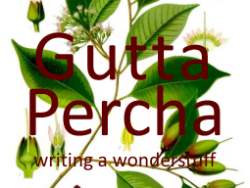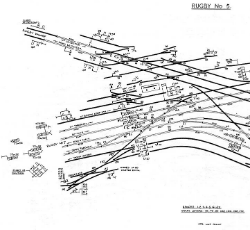Persistent but Resistant: Scrambled Messages panel at BAVS2014
 Gutta-percha: writing a wonderstuff
Gutta-percha: writing a wonderstuff
Cassie Newland discusses gutta-percha tree as the sustainability disaster of the Victorian period. Gutta-percha is a natural plastic which was discovered to be an excellent electrical insulator and was the only material found capable of protecting submarine telegraph cables from the briny ravages of the sea. As the telegraph industry boomed through the 1860s, 70s and 80s gutta-percha was driven to extinction by the demands of the very industry it made possible. As a material gutta-percha has been narrativized and re-narrativized. Used to confront contemporaneous preoccupations and teach timely lessons. Whether this be a morality tale of benevolent philanthropy in the 1840s, a blustering, ambitious Imperialism in the 1880s, or the calm assurance of a petrochemical future at the turn of the 20th century. The process of rewriting gutta-percha continues today but is now preoccupied with environmental issues and third world exploitation. Gutta-percha continues to reflect the questions we need to ask, the stories we need to tell, and the message we need to hear. Video paper available here.
 "I'll
go back instead of going on": Taking One's Time at Mugby Junction
"I'll
go back instead of going on": Taking One's Time at Mugby JunctionIn its snowballing
of print, Victorian Christmas exemplifies the overwhelming experience of proliferating
temporalities. This paper argued that Dickens’s contributions to Mugby
Junction, the 1866 Christmas number of All the Year Round, offer a model of
sustaining a personal rhythm within the proliferating and often conflicting
rhythms of modern life, in which sustainability is predicated upon processes of
adaption. Mugby Junction operates as an analysis of modern experience of
conflicted times. This paper explored Dickens’s representation of those who
‘take their time’. It considered how Dickens presents this as possible within
the rhythms that he suggests are sustainable and those he suggests are
disruptable and unenduring. I examined his portrayal of the tensions between
what one might think of as natural and industrial rhythms. I then moved
to argue that, in his contributions to this Christmas number and his conducting
of the number as a whole, Dickens explores the problems of both adapting rhythms
and adapting to rhythms.
